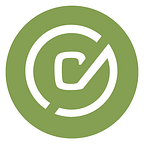How to Use a Business Model Canvas to Help Entrepreneurs
A business model canvas is the ultimate tool for helping entrepreneurs get unstuck and move forward. Here’s how to use it well.
Most people who work in entrepreneur support have likely heard of a business model canvas, but how do you actually use one effectively when helping an entrepreneur?
We’ve helped over 21,000 entrepreneurs move forward with their businesses using the same business model canvas. Here’s what we’ve learned.
What is a business model canvas for?
As an entrepreneur support organization, one of the most powerful tools you can have in your toolbelt is a business model canvas.
When an entrepreneur comes to your office looking for help, they may have ideas about what they need: more money, better marketing, a mentor, etc.
These are definitely important ingredients for success in business. But sometimes entrepreneurs fixate on one thing so much that they lose sight of all the factors contributing to their situation.
You’ve probably seen an entrepreneur seek out funding for their business, only to discover that no lender wants to fund them. This is often because the entrepreneur fails to validate their idea before seeking out funding for it.
So how do you help them validate their business model?
That’s exactly what a business model canvas is for.
Business model canvases have been floating around the entrepreneurship world for a while now. You’ve probably seen a few versions, like this one.
The problem with most business model canvases is that they aren’t accessible to entrepreneurs who arguably need them the most — the ones with no business education or familiarity with the startup scene.
To help entrepreneurs see all the different parts of their business and how they relate to each other, we created our own version of a business model canvas, which you can download here.
Until an entrepreneur can answer the questions in these eleven boxes, they don’t really understand their business. Not only is each element of the Canvas important on its own, but they all relate to one another to explain how the business will work.
For example, a business’s “Message” is the story it tells about what problem it’s solving (Problem), who it’s solving that problem for (Customer), how it solves the problem (Solution + Benefit), and why it’s better than the alternative ways of solving the problem (Alternatives + Advantage).
All of the elements on the Canvas need to align for the business to be successful.
If the business’s distribution method doesn’t make sense for the customer, then customers won’t buy.
If the business’s advantage isn’t strong enough to outweigh the alternatives, it will be drowned out by the competition.
If the business does not solve a real problem that real people have, it won’t make enough money — no matter how good the marketing is. (In business jargon, we might call this a “lack of product market fit.”)
Using the CO.STARTERS Canvas with Local Entrepreneurs
So how can you use the CO.STARTERS business model canvas to help entrepreneurs in your community?
Get the 10,000 foot view.
Lay the Canvas out in front of them and say, “walk me through your business.” Lead them through the Canvas and observe. Encourage rapid fire responses. It’s more important that they have an answer than that their answer is perfectly thought-through.
As they walk through the CO.STARTERS business model canvas, take note of how they’re answering the questions. Where are their answers quick and confident? Where do they hesitate? Where do they get completely stumped?
Mentally flag parts of their business model that don’t seem to align. If their target customer is a working mom with young children, but their distribution method requires the customer to retrieve the product from a distant location during the work day, you’d want to note that as a potential issue.
Dive Deeper.
Once you’re finished going through the business model canvas, return to the places where the entrepreneur got the most stuck.
If the entrepreneur came in fixated on a specific solution, you’ll want to say something like:
“I understand ________ is what you feel as the most pressing need. However, to be successful in that (felt need), it may be helpful to first focus on ______________ foundational activity. When we were talking, I wasn’t clear on that aspect. Would you help me understand it?”
A large amount of the time, we find that many problems early on in a business’s life stem from a lack of customer discovery. It’s important to probe the entrepreneur about whether they are making decisions based on customer feedback or just their gut assumptions.
If you’ve identified a problem spot in their business model, ask them “Have you talked to customers about this? What do they say?”
Define a Clear Next Step Forward.
As the entrepreneur explores the CO.STARTERS Canvas and discovers what their biggest needs are, it’s up to you to help the entrepreneur figure out how to address that need.
To do this, you’ll need to be familiar with the resources available to business owners in the community (including the ones you provide!), so that you can point the entrepreneur in a helpful direction.
If you use this method enough, you’ll soon figure out what local entrepreneurs’ biggest needs are.
Do you find that most entrepreneurs don’t really know who their customer is? Maybe it’s time to host a workshop on the topic!
See a lot of confusion about business formation and legal entities? Hold a panel with some local attorneys.
If using a business model canvas like this appeals to you, check out our Wayfinding Guide, a digital pamphlet that goes into further detail on how to conduct productive meetings with entrepreneurs.
All entrepreneurs get stuck. It’s in the very nature of starting something new. But with an intuitive map like the CO.STARTERS business model canvas, you can pave a clear path forward for any entrepreneur in your community.
Originally published at https://costarters.co.
